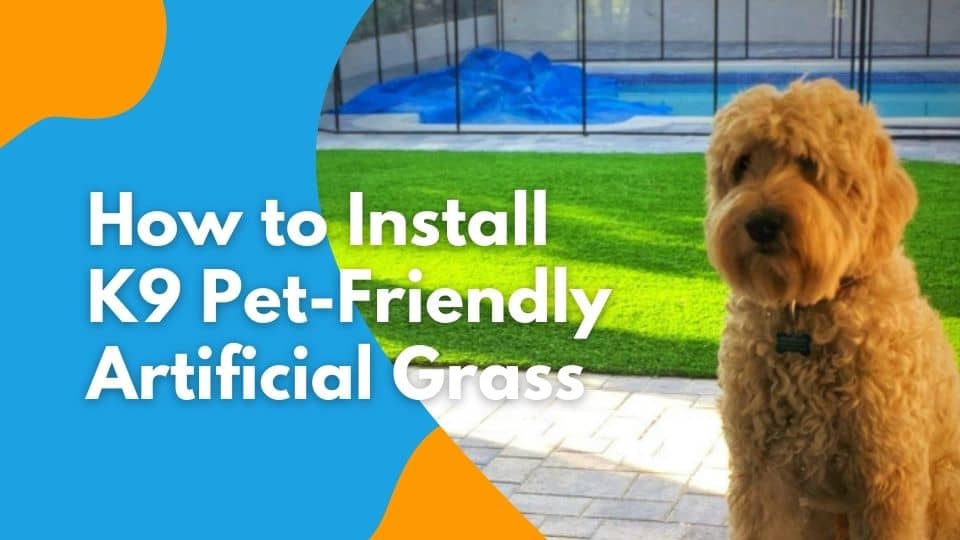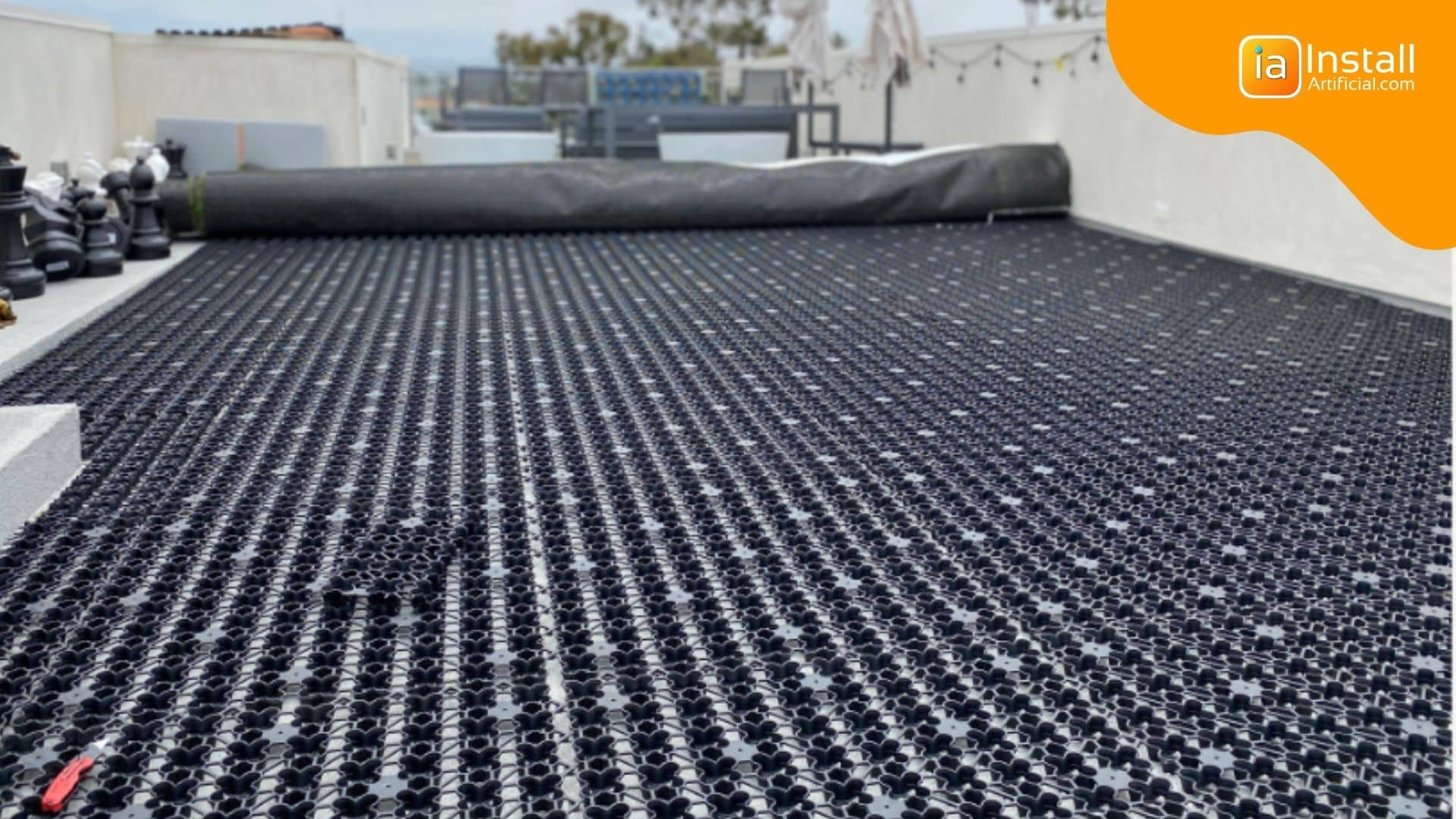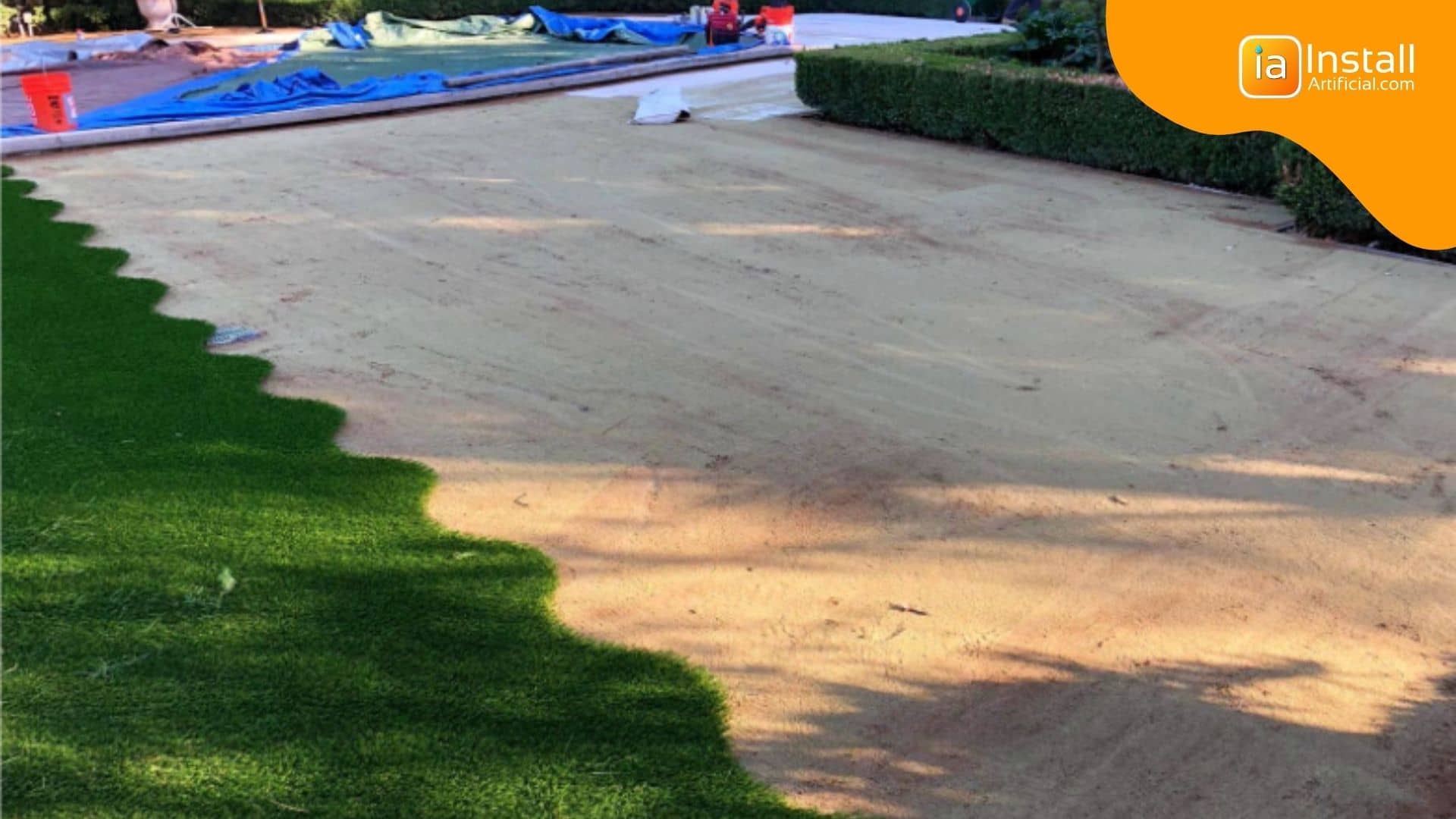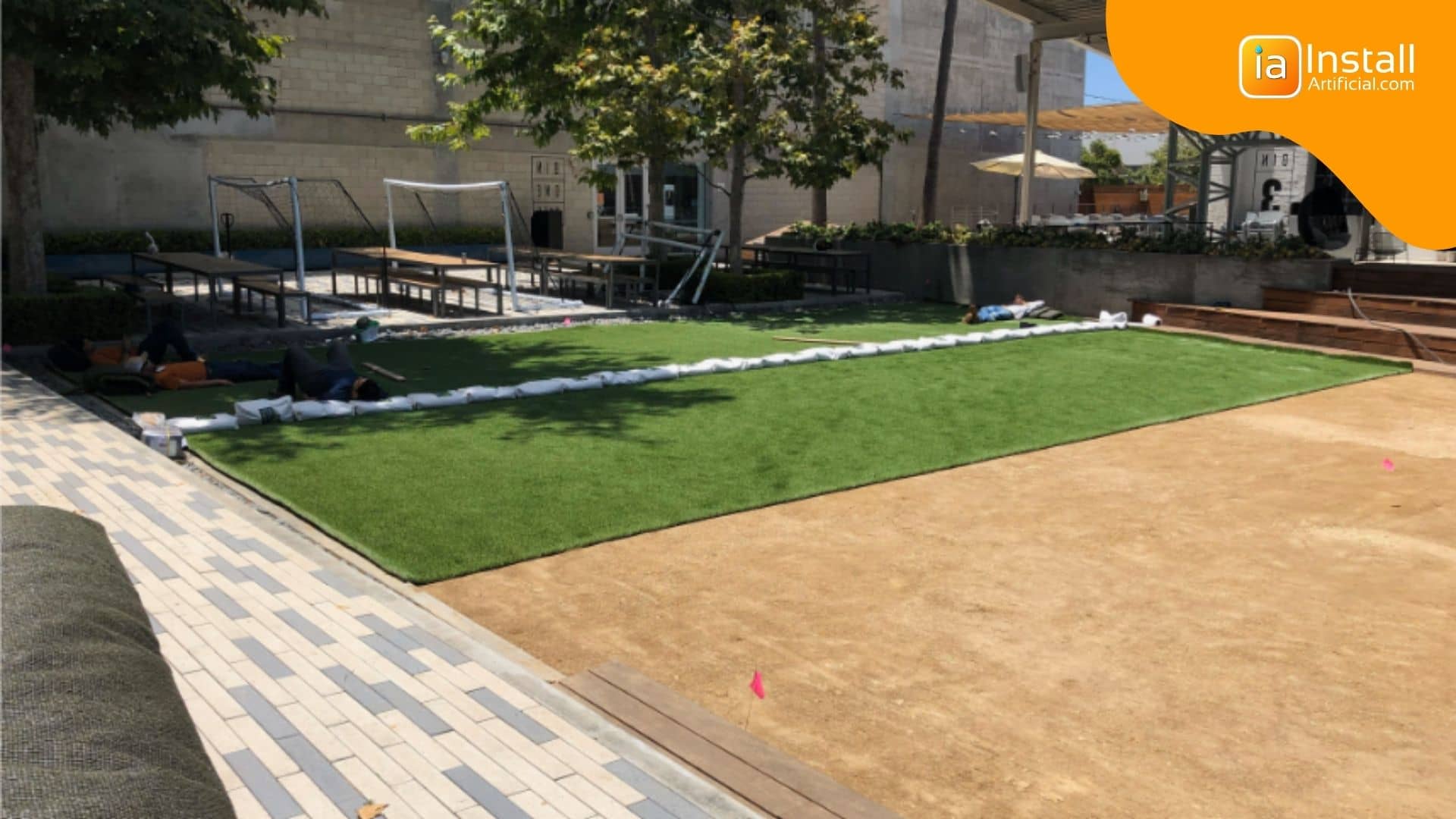
Learn how to install K9 pet turf artificial grass systems for dogs. Discover the best and most used approaches to proper pet turf drainage, and why it's so necessary....
When installing artificial pet turf diy, there are few more steps than regular artificial grass to ensure your artificial lawn has adequate drainage. Before you lay artificial grass, you need to make sure your pet turf installation area has a solid foundation and a drainage underlayment layer. When installing artificial turf for pets, proper drainage will ensure you're able to consistently clean and sanitize the artificial lawn to prevent odors and bacteria.
Lay your drainage layer on the surface. Drain core comes in sheets that are 4 x 50, (covering 200 sq. ft.) so plan accordingly to ensure you order the correct amount. The drain core will need to be fixed with nails on the sides to keep it secure under the surface. Drain core is necessary for complete pet-friendly systems as it helps to ventilate artificial turf and reach underneath the material during cleaning.

Lay the turf roll in the sun for 30 minutes before unrolling. This will soften the artificial grass material and make it easier to work with. Unroll the synthetic turf making sure if you have multiple pieces you're facing the blades in the same direction.
This step is only necessary if you have multiple pieces of turf. Once the artificial grass is measured and cut to size, seam the pieces together using professional adhesive. For best results, use the zipper or S method to make the seams less visible. Make sure that the blades of each piece are facing the same direction.

*Note: Manufacturers do not advise the use of nails during pet-friendly turf projects. This is due to the possibility of dogs pulling the turf and removing nails after you install artificial grass. Instead, they recommend building a frame around the perimeter and stapling turf to the frame. This is a much more secure installation. Most homeowners still use nails, however, manufacturers are not liable for turf damage in this case. If you install a frame, this will need to be done after soil removal prior to laying your base layer.
Stretch and nail down turf on the perimeter every 2 in. Stretching artificial grass is an important process to prevent wrinkles from occurring. Make sure the sides are nailed deep into the ground and that nails are hidden. This will help prevent dogs from digging at the turf. We'd also recommend nailing every 2 ft. throughout the surface for added protection. From there you can trim any excess on the edges.

Apply antibacterial sand infill to the surface. This will help prevent wrinkles, bacteria, and help make the surface cooler for your pets. Use 1 lb. per sq. ft. While this is the step most people cut corners on, sand infill is very important for the life of your new installation. Use a push brush to evenly distribute the sand along the surface.
While pet turf systems provide added ventilation and drainage underneath the surface, that doesn't mean it doesn't require cleaning. Pet Turf must be rinsed and sanitized consistently to control the smell. Make sure the grass is brushed prior to deep cleanings to help redistribute the sand infill and allow for a better flow of cleaning solution. Learn how to win against odor with our other articles! And to learn about popular cleansers, check out our article here.
Whenever you're ready to get your project started and have a new clean and green lawn for you and your pets, request a pricing estimate for the best K9 turf materials below. We'll assist you in purchasing the perfect turf for you and help you with all accessories needed for installation as well. We can't wait to get started!
Luckily, artificial grass has been developed over the years to look and feel like natural grass so often dogs will be comfortable going on their own. To help your dog learn to use the restroom in your new synthetic back yard you can use positive reinforcement, fake fire hydrants, and scheduled potty breaks.
For the best odor preventing results, place a drainage layer and odor neutralizing infills beneath the surface of artificial grass for pets. An antibacterial infill should be used on top of the surface as well.
Two popular drainage options for underneath artificial pet turf are DrainCore and AirDrain. Both options will offer ventilation and a void for water movement to flush out urine when you clean the surface.
The cost of artificial turf materials in ranges from $2.45-$6.55 per sq. ft., while the cost of pet turf installation in ranges from $9-$14 per sq. ft.
The best base for any artificial grass installation is a Class II Road Base. However, this material may be tricky to get as a homeowner who is DIY'ing the project. In this case, use decomposed granite and a stabilizer as your base material.